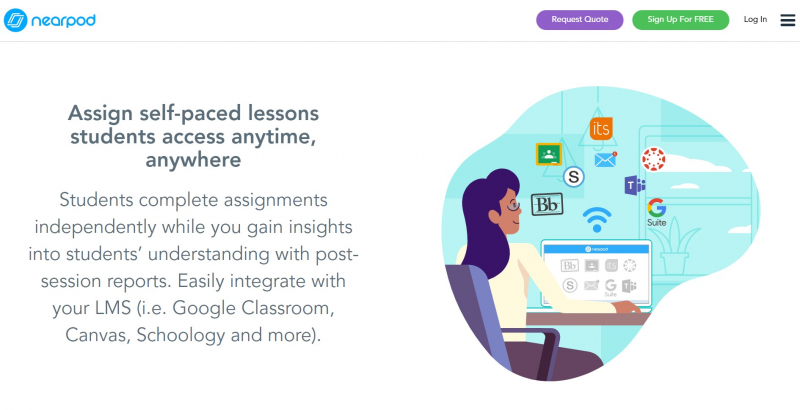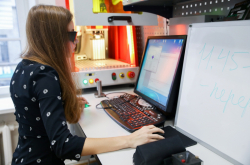As part of the ITMO.Expert Digital Learning project, a workshop was held on hosting interactive classes with the Nearpod service. Viktoria Korzhuk, an ITMO University lecturer and assistant at the Faculty of Secure Information Technologies, shared her experience of using Nearpod when delivering lectures and practical seminars for students. ITMO.NEWS put down the keynotes.
The Nearpod platform can be used for both in-person and online classes. The service registers the names of a session’s participants, their engagement, as well as their answers to questions and tests. After the class, all information can be downloaded in the PDF format and analyzed accordingly.
Why should platforms such as this one be introduced into the education process?

The learning paradigm is changing, and lecturers’ tools should change with it. Modern education has the following key features:
-
Increase in the number of students and, consequently, the inability to organize some conventional activities, tests and examinations because of their orientedness at small groups.
-
Increase in the amount of information and, what’s important, it’s availability. Classes are no longer the only source of knowledge, which makes involving students in the process more difficult.
-
Use of online courses – online education becomes the norm, and EdTech – its forefront.
-
Active use of online platforms in our private and work lives.
A lecturer’s work can be facilitated by services such as Yandex.Disk, Google Drive, Mentimeter, Trello, Kahoot!, Quizizz and others – each of these offers one or several unique functions, but in order to host classes it’s better to have one platform with a maximum amount of tools to avoid losing time on switching between different services. That’s why Nearpod is such an excellent option.
Advantages of Nearpod

In Nearpod, you can:
- ask the audience an open-end question;
- create a board with answers (where students can even like the options they deem correct and the teacher can moderate the publishing of answers);
- host a survey / test / quiz;
- set a matching pairs task;
- show a video;
- send links and images;
- and much more.
Going beyond the scope of a class, what also makes Nearpod convenient is its reports, which a lecturer can download after the class.
The platform’s advantages include: import of presentations; attendance control; opportunity to create slides then and there; broadcasting to students’ screens; opportunity to conduct tests, surveys and discussions; detailed reports; links to videos and other resources.
How to create a presentation in Nearpod?

In order to prepare for a class in Nearpod’s system, you have to register and sign in to your personal account. There, you can upload a complete presentation in the PDF format, and also add other slides enhanced with the platform’s activities (matching pairs, poll, quiz, open-ended question etc).
All ITMO University lecturers can request unlimited access to the service until the end of June by sending their name, surname and email address to Kristina Ivanova at kyivanova@itmo.ru.
The full presentation on Nearpod is available here (in Russian).
The recording of the workshop is available here (in Russian).





